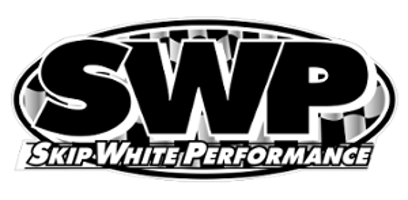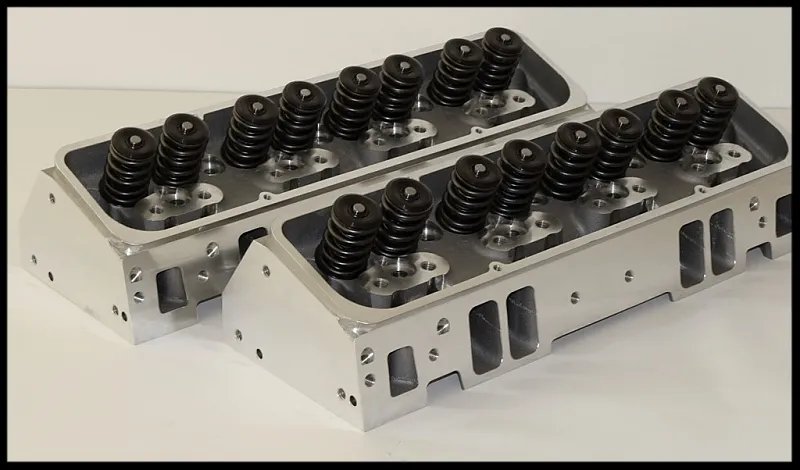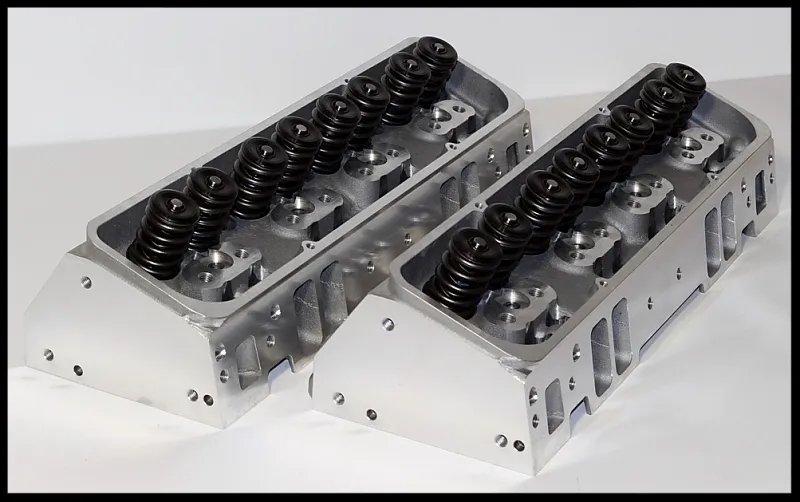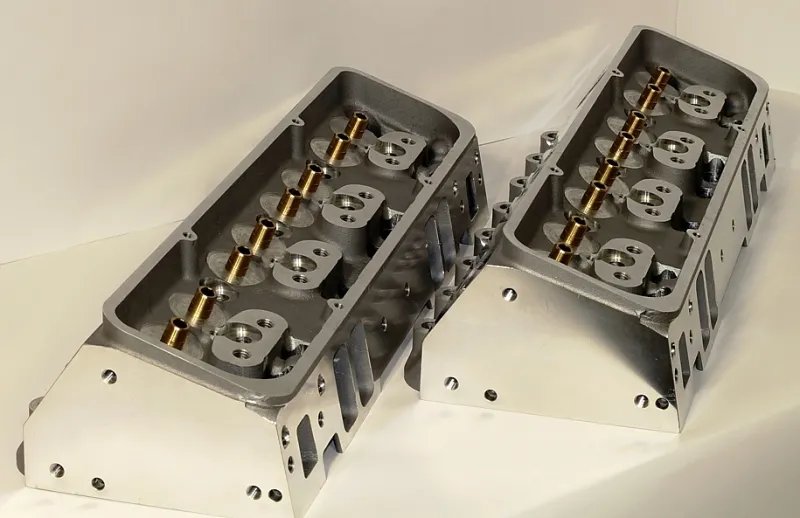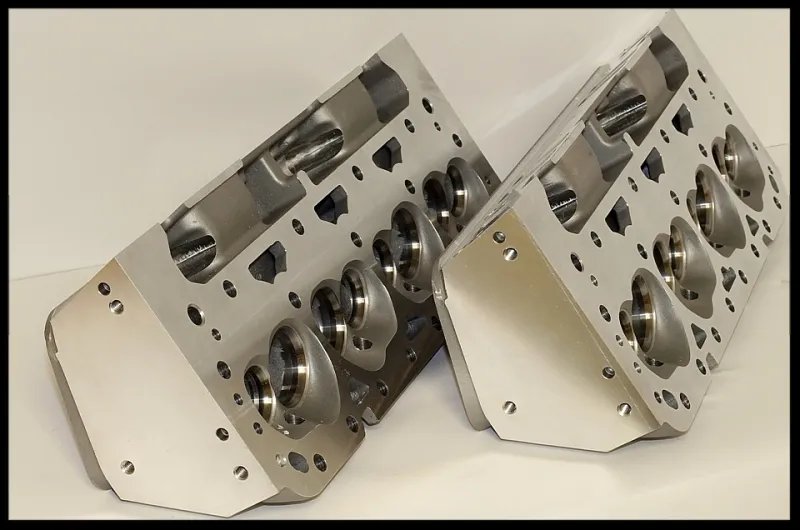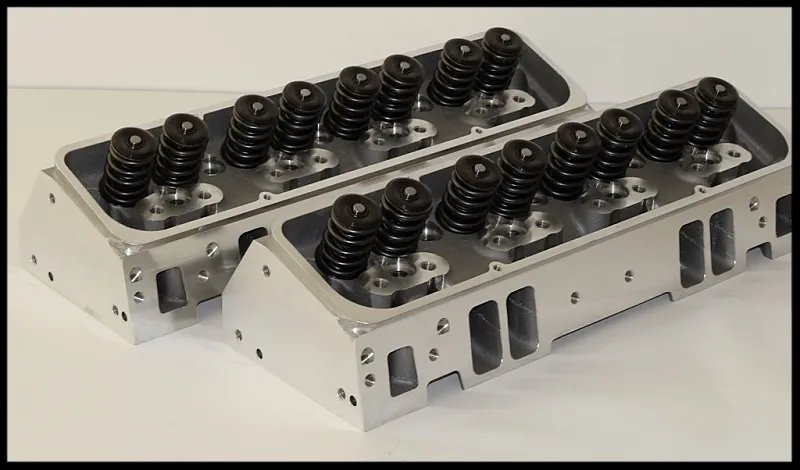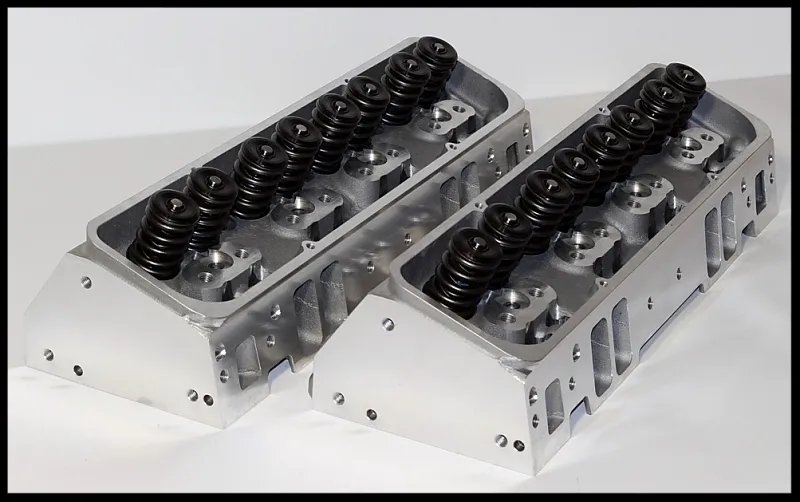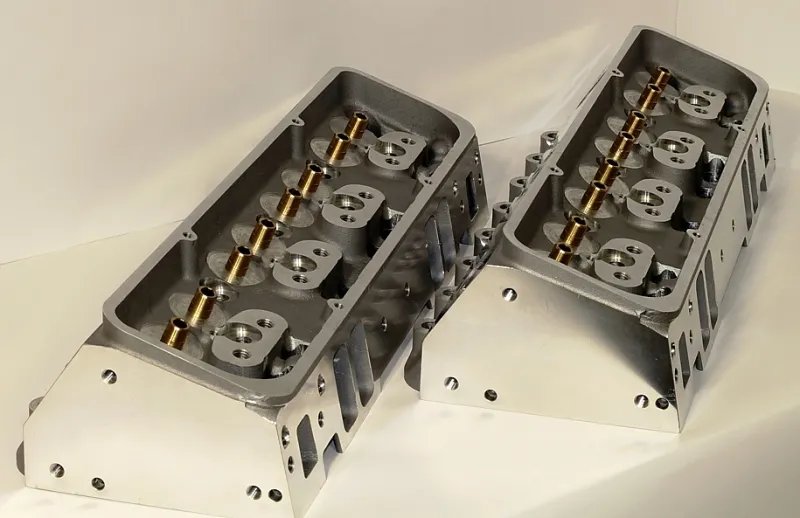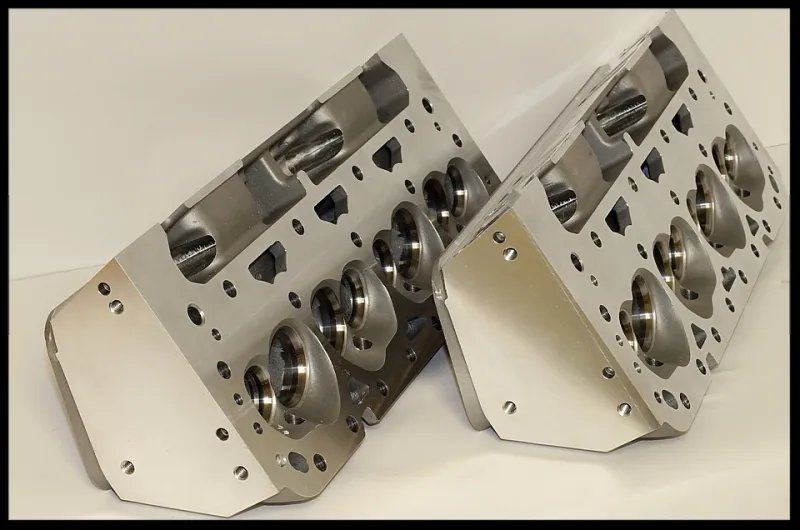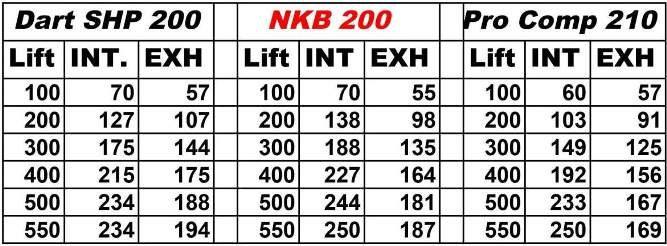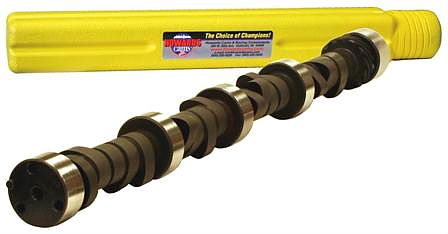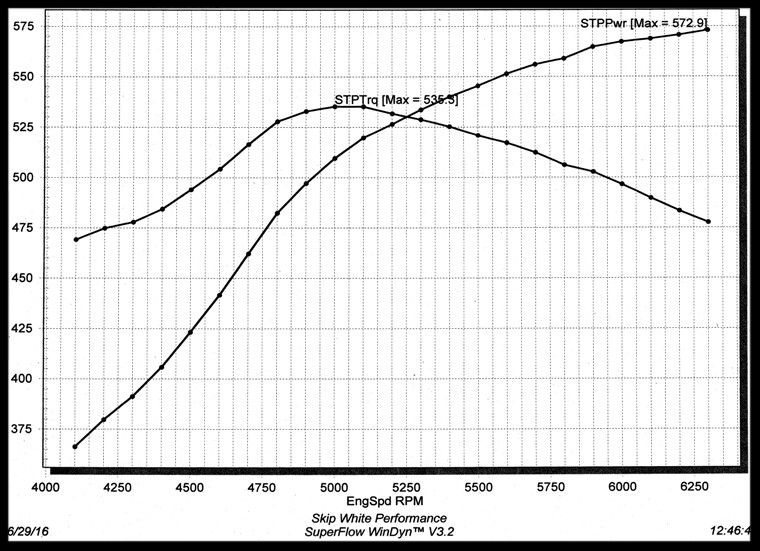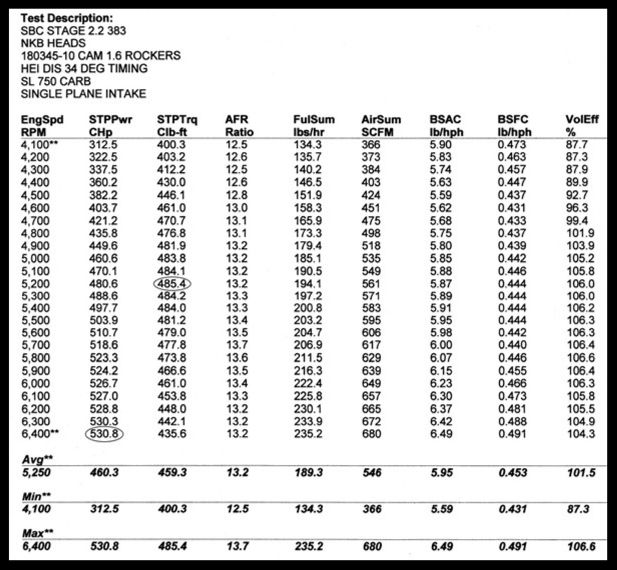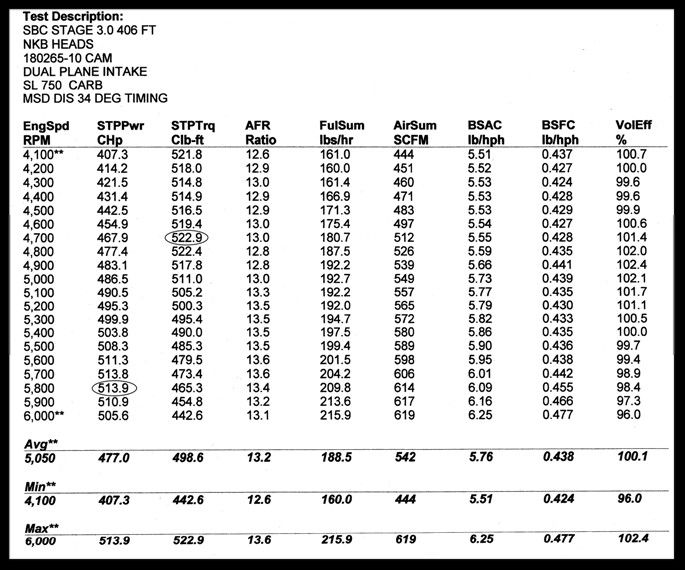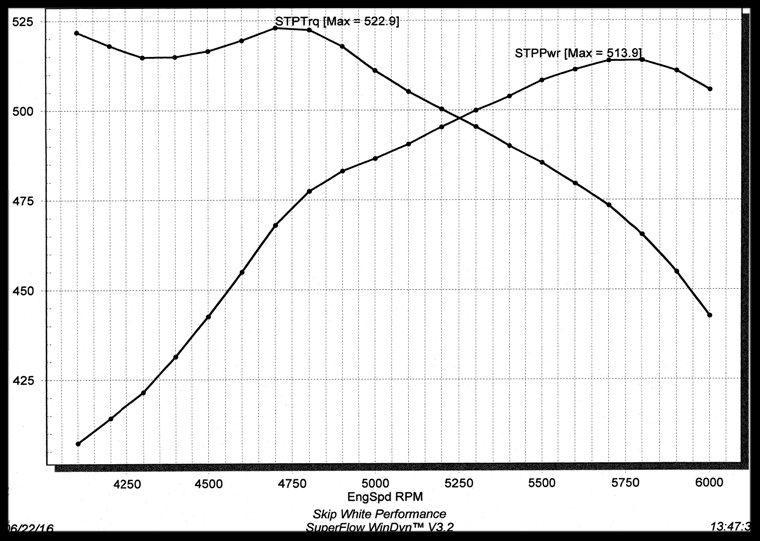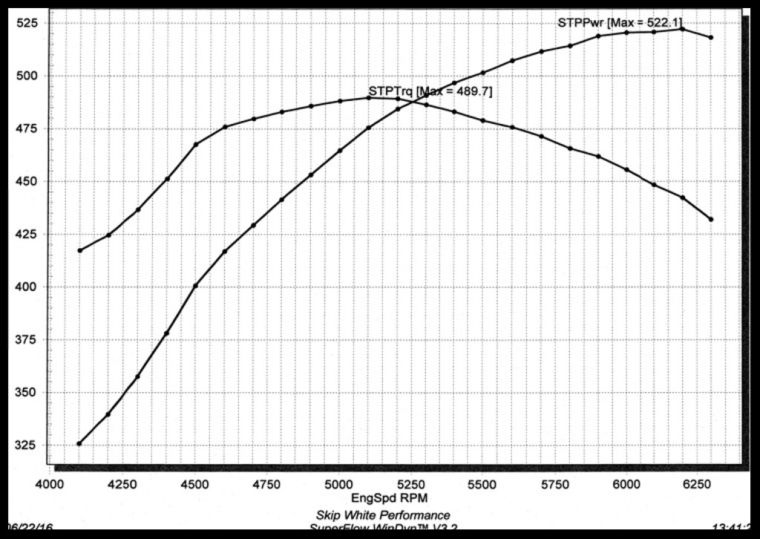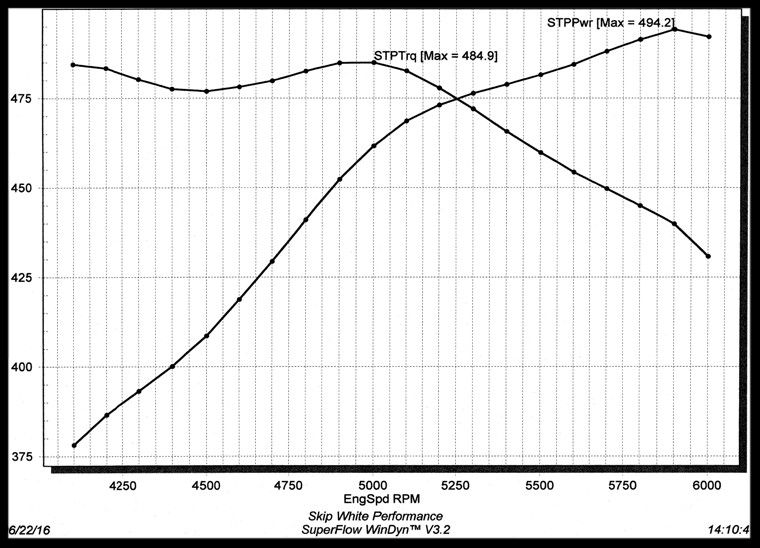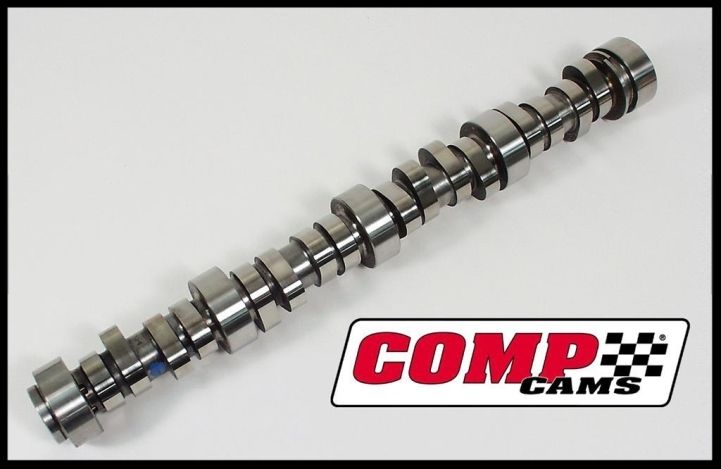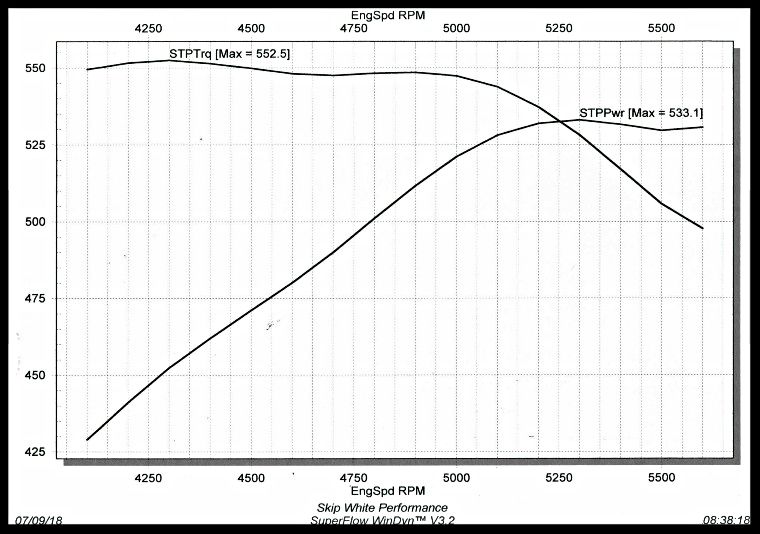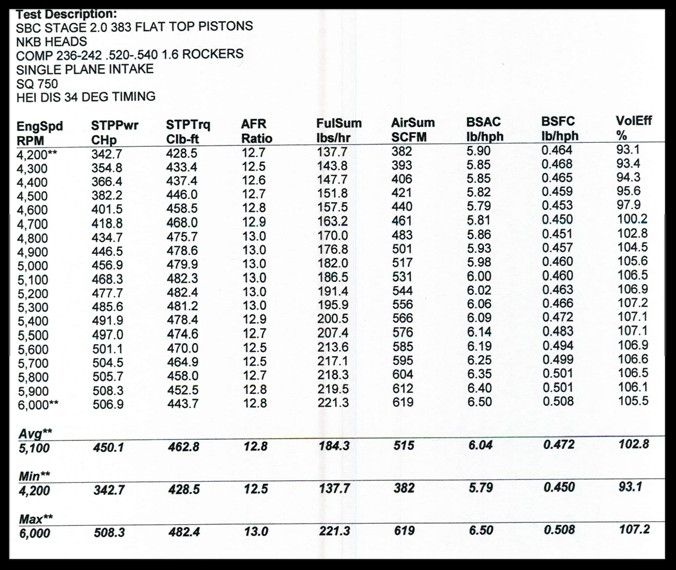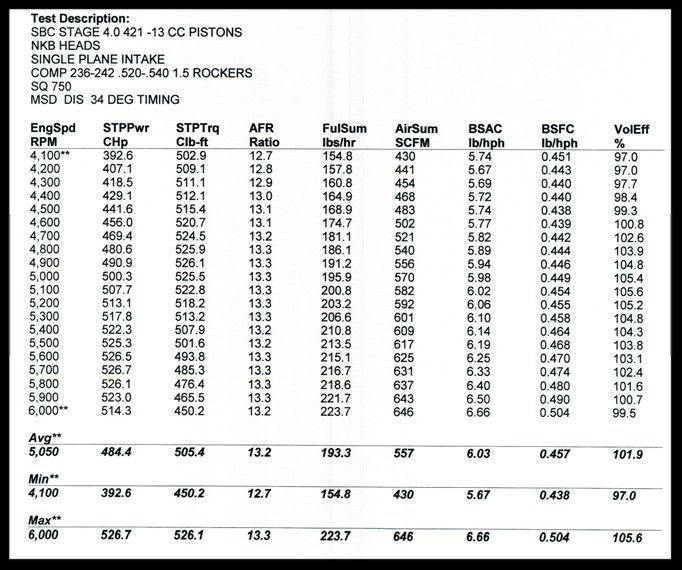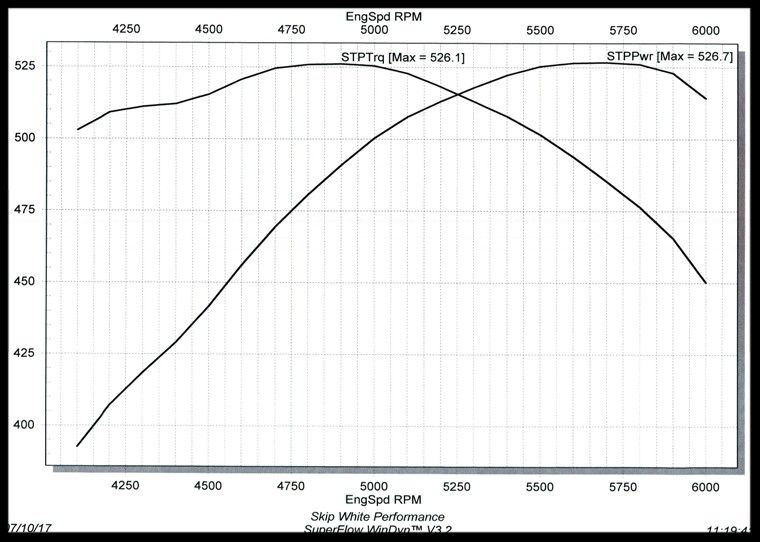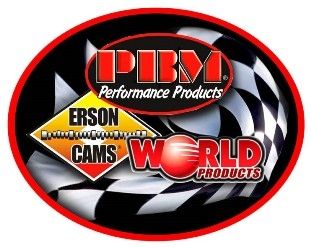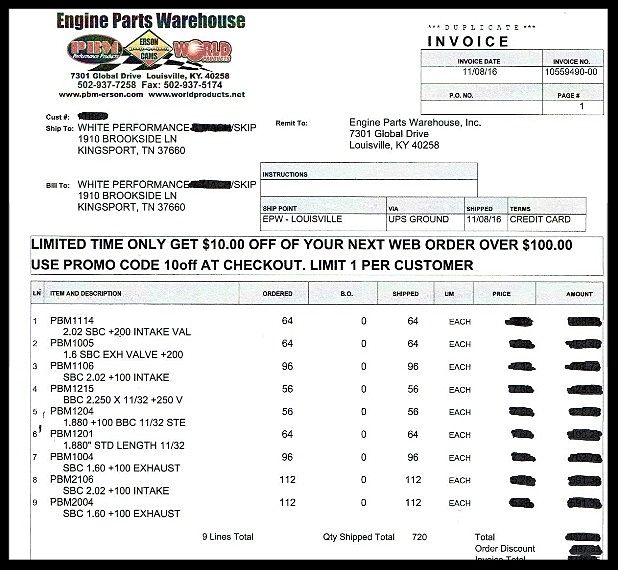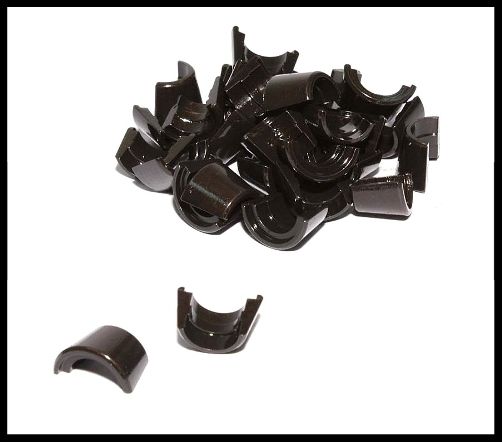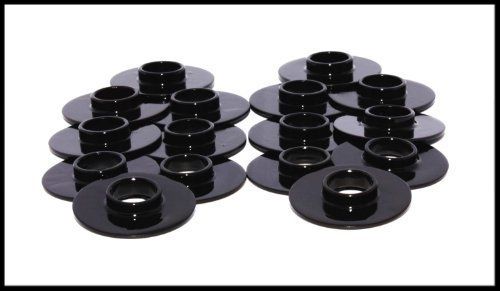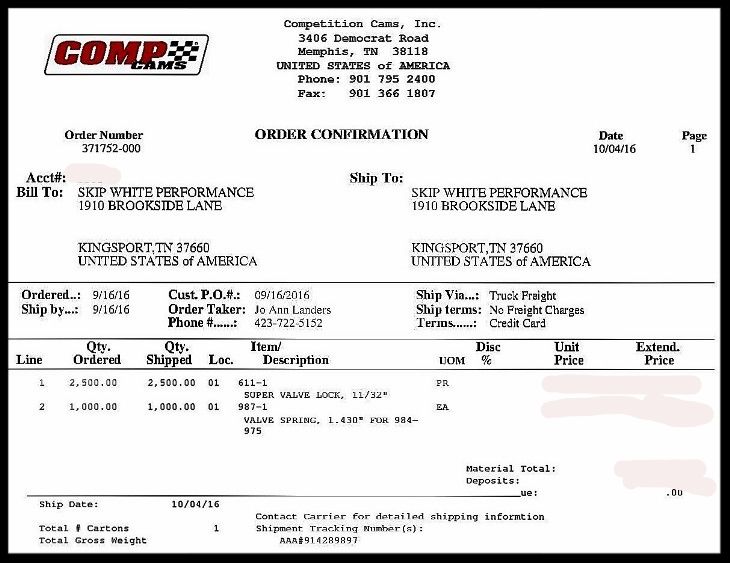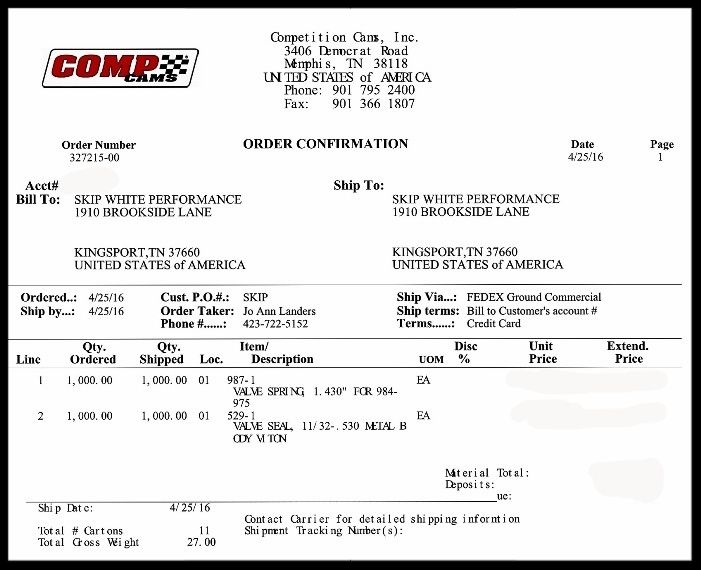Solid Roller - 68cc
$1,059.00
In stock (10 available)
SBC - NKB Ultra High Flow Heads
PBM Valves - Hydraulic Roller - 68cc [NKB-68-274-PBM]Hydraulic Roller - 64cc [NKB-64-274]
Hydraulic Flat Tappet - PBM Valves - 68cc [NKB-68-272-PBM]
Hydraulic Flat Tappet - 64 cc [NKB-64-272]
Bare Casting - 64cc [NKB-BARE-64cc]
SBC CHEVY 327 350, 355 383, 400, 406, 421 ENGINES.
This sale is for one fully assembled set of heads (2 heads).
200cc RUNNERS, 64cc COMBUSTION CHAMBERS.
These heads are available in straight or angle plug style, with and without steam holes.
THE BEST FLOWING, BEST QUALITY SBC ALUMINUM HEADS ON THE MARKET FOR THE MONEY.
Flow Numbers
Below is our flowchart on several different heads. All tests were performed on a Superflo 1020 bench by our expert head builder. We stand behind the accuracy. We have noticed many other sellers posting what we consider to be false flow numbers on the heads they are selling. We find this to be nothing short of outright fraud. Of course, flow numbers can vary a few points depending on equipment used and testing methods, but not by 15-25 points. Notice the low lift flow numbers produced by our new heads. That is as important as the upper lift numbers, and it's why these heads produce so much peak power and torque. We are very impressed with the flow numbers of our new heads.
In the flowchart above, the NKB-200s are superior to the Procomp heads in flow numbers, and also edge out the Dart SHP heads on the intake side. The intake numbers are far more important than the exhaust. The overall average flow numbers on the NKB-200 heads are higher than most any brand of non cnc'd cast aluminum heads on the market. We guarantee the flow numbers to be accurate, as well as the horsepower numbers produced by them.
Most importantly, all three of these heads were tested by the same person, on the same machine, (Superflo bench 1020) using the same testing method, on the same day. These numbers show the true difference between each brand, and that's what counts.
The difference in horsepower and torque generated by these new heads is monumental compared to the 210cc Procomp heads. We offer several different cam choices with our 383, 406 and 421 engines, and every combination has shown an increase of up to 50 horsepower and no less than 40 hp over the Procomp 210cc heads. We assumed the new heads would generate a considerable increase in power, but to our surprise, they generated more power than expected.
We tore down the heads that were on our 383 house engine and checked the guides as this was an area we are most concerned about, and found zero wear. The seats were also in perfect condition. We tested the spring pressure to see how much was lost after a brutal 80 or so dyno passes, and saw approx. 5 lbs of pressure drop on the nose, and even less on the seat, and this is to be expected.
Many of the dyno passes were run to 6500 rpm as the large cam needed 6300-6400 rpm to make peak power, and you must run past this to determine the fall off point. The super sized cam (choice 1) was run on the heads towards the end. Considering the size of this cam, it was very impressive to see zero issues with the heads or hardware. We made a good 25 passes with the big cam trying out different carb sizes, jetting, intake manifolds, timing setting, and adding the Super Sucker plate last.
Springs
Different cam types require different springs and valve lengths. Be sure to pick the correct option.
These heads are not built by Procomp, and have no association with them in any way.
Best "bang for your buck"
We certainly know where to draw the line with low end products, and we continue to eliminate parts that we once accepted but that eventually had problems. Sometimes it's not that a particular product has had a problem that leads to its elimination; something better just comes along. The NKB cylinder heads are that "something better" coming along. Considering the price is only slightly higher than our former line of heads, this has to be the best value in a set of cylinder heads we have ever offered. We now use the NKB heads on all of our 350, 383, 400, 406, and 421 engines. The performance has been outstanding on every combination we have tried them on. We have been selling the NKB heads for around 4 years. We have sold approximately 5500 sets, and problems have been near non-existent.
Intake Gaskets
The Felpro 1206 is the intake gasket part number is the most common used with these heads Some intake manifolds will set too low due to their design, and the 1266 extra thick intake gaskets may be required. You may also be able to use the Felpro 1205 intake gasket depending on the style of intake used.
Very Important Note
If you are using an Edelbrock Performer EPS intake then you will need to use a 1205 intake gasket instead of the 1206. This is due to intake flange not covering the top of the 1206 intake gasket properly. The 1205 is slightly small for the NKB heads, and may need a very slight amount of trimming to avoid any gasket materiel hanging over into the intake runner. We have been through this procedure in our engine room many times for engines using the Performer EPS intake.
Part Number Breakdown
The NKB stands for "New Kid on the Block"; 200 represents the runner size, 272 designates the use of standard length valves, and single springs with a damper setup for hyd. flat tappet cams. You will also see the heads listed with the number 274. The 274 designates the use of longer valves with dual springs with a damper, setup for hyd. roller cams. We also have the valve train setup for solid roller cams, and will have the number 583 rather than 272 or 274. The heads listed with the letter "A" in the part number are angle plug design. We also offer these heads with steam holes for GM 400 blocks. These will have the letters SH (Steam Holes) in the part number. Be absolutely certain of what you need before buying. Feel free to call us if you need assistance deciding what you need for your build.
Competition Series PBM valves Available
Our NKB-200 heads have been designed especially for us. After receiving many recommendations from our engine builders, we came up with the best quality, best flowing heads on the market relative to cost.
The only way you're going to get a set of heads that flow as well or better will be to spend at least double the cost or more. We have installed these heads on all of our 383 and most of our 406 engines for the past 4 years.
Many of these engines were dynoed on our Superflo dyno. The engines had every possible combination of cam, intake and carb. The results have been amazing. These heads are excellent in design and quality.
Our choice of hardware and precision assembly also contribute to the performance and reliability of the heads.
Valve covers
These heads can be used with outer perimeter or center bolt valve covers. We offer many types of valve covers .
Recommended Accessories
|
Part |
Part Number |
|
Intake gaskets |
· Felpro #1206 · Extra thick: Felpro #1266 |
|
Head gaskets |
· Felpro Z-1003-2 · GR-30-PAIR, .030 THICK · GR-40-PAIR, .040 THICK · 5219-PR, multi-layer |
|
Exhaust gaskets |
· 5206 oval port |
|
Valve cover gaskets |
· 7483 extra thick · 7484 |
|
Head bolts |
· 2451-W · ARP-134-3601 |
|
Head studs |
· PCE-279-1001 |
|
Spark plugs |
· Autolite 3923, heat range 3 · NGK 4554, heat range 8 |
|
Pushrods (check with pushrod checker!) |
· HB-BULK-7.250-16 for -274 · HB-BULK-7.900-16 for 272 |
Important Note
For those running an HEI distributor, the plug gap should be approx. .040-.045 Those running an MSD 6AL unit should gap the plugs to approx. .035-.040
These values are very controversial and you may experiment as to what runs best in your engine. Widening the gap too much can put a strain on the ignition components. Be sure your plug wires are completely fastened onto the spark plugs.
ONE YEAR WARRANTY, UNLIMITED MILEAGE.
Rocker Arms
We have now eliminated another of the low cost knock-off products from our line. The low cost imported rocker arm studs have shown numerous problems unlike those in the past. We have looked at several others on the market, and still find many issues with them that are not acceptable.
Many of the studs had run-out in the shaft of up to an eighth of an inch. This caused major problems with rocker alignment, and depending where the position was when the stud tightened up, would determine the direction of the rocker misalignment. If the warped stud was facing toward or opposite the valve, then the roller tip would would not be centered to the valve tip. This would then create a loss of lift and cause increased wear on the valve tip.
If the warped stud tightened up in a side to side position, then this would allow the rocker tip to be cocked on the valve tip. This would then side load the valve tip with undue pressure, creating a serious wear problem on the side of the valve tip and create excessive wear on the valve guides in the heads. This also side loaded the rocker trunnion and front roller, creating an excessive wear issue in the roller rockers. This run-out was most likely caused by improper heat treating methods.
We have rejected many products that are outright junk and would cause serious issues in your engine only to see other sellers offering those same exact products. It's all about learning where to draw the line.
Studs and Guideplates
Studs and guide plates are NOT included. Other sellers may include these items but rest assured, they are usually not suitable for these heads. We use nothing but the Dart guide plates and ARP rocker studs when we build an engine using these heads, as they allow for perfect alignment of your rockers. See our other listings for a full selection of accessories.
Other Listings
See our other listings for valve train related items that you may need for your project. The part number for the correct studs and our Dart guide plates to be used with these heads is 38-GP for those running 3/8" size roller rockers, and for those with 7/16" roller rockers the part number is 716-GP. These kits are available in our other listings.
Very Important Note About Valve Springs
We have noticed several sellers offering these heads with a one size fits all valve springs for dual use on hydraulic flat tappet and hydraulic roller cams. We are sure this is not the proper way to setup the heads.
If they have this one size fits all setup somewhere in the middle spring pressure values of what is required for a hyd. flat tappet and a hyd roller cam, then it would be too much for the hydr. flat tappet cam, and create a wear issue. Putting too much pressure on flat tappet cams is a sure way to kill the cam. If these middle of the road springs were used on a hyd. roller cam, then the spring pressure would be too low. Valve float and its damaging effects, along with a loss of performance, are sure to occur.
We use the correct spring for your setup and it is never the same on a hyd. flat tappet as it would be on a hyd. roller cam. As mentioned above, the spring requirements between a roller cam and flat tappet cam are dramatically different. Even the odd ball solid flat tappet cam has its own unique setup depending on the lift. The one size fits all hardware claims also to work on these cams. We know of several sellers offering this insane setup to unsuspecting buyers, and it's not the proper way to set up a set of heads. We would not even consider using a spring setup like this, and believe me, the simplicity of it is appealing.
Cast from AC4B Alloy
Our cylinder heads are made from AC4B alloy and tempered to T6 standards. You may have heard the alloys 355 and 356 being used on many heads. The alloy used on our heads is similar but slightly different. The AC4B alloy is commonly used by automakers in Europe and Japan. Take notice of the Rm value. This value indicates the tensile strength of an alloy. As you can see, it's higher than all the other common alloys in this chart. It's no surprise as to why we have never experienced a failure of any kind with these heads. Zero failures in the casting, zero failures in the seats and guides. We have sold over 5000 pair of these heads over the past four years.
List of Standard Alloy Characteristics
|
Alloy +B4: H16 |
AC4B |
AC4C |
AC4CH |
AC4D |
AC7A |
|
|
Mechanical
|
Rm
|
345 |
285 |
260 |
320 |
245 |
|
R0.2
|
250 |
225 |
157 |
240 |
105 |
|
|
A
|
1.6 |
7.3 |
16.8 |
4.1 |
5.3 |
|
|
Temper |
T6 |
T6 |
T6 |
T6 |
F |
|
|
Features |
High strength, small elongation
|
Castability: good
|
Castability: good
|
Castability: good
|
Corrosion resistance: excellent,
|
|
|
Examples of
|
Crank cases,
|
Hydraulic parts,
|
Wheels,
|
Cylinder heads,
|
Parts for overhead contact lines,
|
|
The solution to running a hyd. roller cam of decent size in an engine and avoiding valve float is an easy fix, thanks to the Howards Max Effort lifters and our Comp lightweight springs. The cost is only slightly more than the regular Howards street tie bar lifters, and they are undoubtedly the most stable hyd. roller lifters on the market without going to all out racing hydraulic roller lifters. The Max Efforts are also very quiet. Not sure what rpm range they can remain stable at, but we have pushed many of our sbc engines up to the 6,650 rpm range in order to establish the fall off point of a particular build.
We now use these lifters with many of our cam choices. We have tried the Morel tie bar hyd. roller lifters on cams in the 550 and higher lift range in the past and found them highly unstable at around 5800 rpm. Well before audible valve float was evident, the horse power numbers were falling sharply due to valve float. Any cam that's approaching the 550 lift or higher range should not use the Morel street/strip lifters. The Max Efforts were very stable well into the 6500 rpm range and higher. The cam in this ad is below the 550 lift range but close enough to the limit that we recommend the Max Effort lifters.
Head Bolt Washer Recommendation
The NKB-200 heads require the use of special head bolt washers, and extended reach head bolts. Using stock length head bolts will not allow the use of the special washers required, as the OE bolts have a limited amount of thread on them. Not using the special head bolts and washers may cause serious damage to the cylinder heads.
Guide Plate Recommendation
We strongly recommend the use of the Dart guide plates with these heads, or with any aluminum heads for that matter. These guide plates will allow better rocker tip alignment due to the fact the rocker stud holes in them are oval shaped.
We use them on every set of heads we install on our engines, including the Dart Platinum Pro-1's. The rocker tip may end up offset to one side more than is acceptable, and the Dart guide plates allow a decent amount of correction. The variances in stud position to valve guide alignment vary on all brands of heads.
The rockers could also contribute to this issue, as the trunnion or rocker body could have variance. By having proper rocker tip alignment, you are distributing the pressure on the valve tip evenly. This not only reduces uneven valve tip wear, but also prevents undue stress on the valve guides in the heads.
Pushrod Recommendation
We recommend not using stock GM pushrods with these heads. The spring pressures on aftermarket heads are somewhat higher than on OE heads. Combine this with the larger lift and duration cams often used, and stock pushrods may flex or permanently bend.
The stock pushrods are usually made from a mild 1810 steel that has been heat treated. Under high rpm they will usually flex and cause a loss of lift resulting in a power loss. The engine will usually run erratically when pushrods are flexing. The Spintron valve train dyno proves that inadequate pushrods will flex to a great degree as engine rpm increases.
Some GM pushrods have a welded ball on them, and they stand a greater chance of breaking off with the use of larger than stock cams, and increased spring pressure. We offer pushrods made from 4310 chromoly with an .080 wall thickness. They are superior to any stock pushrod. Our prices on them are the best you will find.
The size that you will most likely need with the NKB heads will be 7.250. This size has worked well for us when using the Comp high energy or Scorpion brand rockers. There are many low cost pushrods on the market in the $29-$39 range. These low cost pushrods are totally unsuitable for use with these heads for the many reasons mentioned above, and they are not guide plate compatible. They usually have a wall thickness of only .065. These pushrods will cause problems when used on a high performance setup. There are many factors that can determine pushrod length requirements. The 7.250 length is the most applicable. Should you purchase a set of pushrods from us and find that the length is not suitable, you may return them, and we will send out the size you request.
If you decide to purchase one of our new Comp reduced base cams, then the pushrod length will increase to approx. 7.300 or possibly 7.350 These new Comp custom grind cams are what we now use in all of our engines.
If you are running full roller rockers, we recommend tall valve covers, and this can cause the oil that is pumped up into the top of the heads to not be deflected back down onto the valve springs, valve tips and roller rockers. The lack of oil on these parts can lead to not only a lack of lubrication but also to a lack of cooling on these parts. Heat transfers up the valve stem from the combustion chamber. This heat is very high in temp, and may cause serious damage to the valve guides, springs and roller rockers.
The cure for this would be to install a low cost set of stud girdles. Stud girdles increase stability to the rockers' studs, eliminating flex that is may be present to some degree when running cams several sizes over stock, not to mention increased spring pressures over stock. Stud flex robs your engine of power and smooth operation in the upper rpm ranges. As mentioned above, another very important aspect of using stud girdles is that they deflect oil directly back onto the valve springs, valve tips and roller rockers. On a stock engine this is not an issue due to the fact that stock valve covers are very close to the top of the rocker arms.
Important installation note
As with any new heads, you must do a mock setup with the heads before bolting them on. This is done by setting the heads on the engine and using two bolts to hold the heads in place. This will allow you to check your pushrod clearance, and verify that your rocker studs are all in line. In rare instances, if your pushrods are touching any surface of the heads, you will have to dremel these spots for clearance. We have seen this situation with many aftermarket heads, including Dart. There are areas of the casting that are very close to interfering with pushrods, and it will only take seconds to correct, but you certainly don't want to have completely bolted the heads on and find this out. We received a large order of Dart heads that had an interference issue with the pushrods, and as mentioned, it only takes seconds to correct this with a dremel tool, but not if you have secured all 34 head bolts. You cannot correct such issues with the heads on the engine due to the risk of contamination of the rest of the engine. See our other listings for items you may need to complete your engine build.
Intake Valve Dia: 2.02"
Intake Port volume: 200cc
Intake Port Dim: 2.2" x 1.2"
Int Port Location: Stock
Intake Gasket: Felpro# 1206 fits perfectly with most intakes. Should your intake drop too low, then the 1266 gasket will correct this problem. Our line of intakes have worked very well with the Felpro 1206 intake gaskets.
Head Gasket: Felpro# 1003 or our line of GR-30 and GR-40 heads gaskets. Must use head gaskets that are suitable for use with aluminum heads.
Exh Valve Dia.: 1.600"
Exh Port volume: 70cc
Exhaust Port Dim: 1.356" x 1.420" w
Exh Port Location: Stock location & bolt pattern
Exhaust Gasket: Depends on what type exhaust you're using. Best to try and match up the gasket to your header or manifold
Flow, Intake: See chart above.
Flow, Exhaust: See chart above.
Head Bolts: We strongly recommend ARP # 134-3601 head bolts. Must use extended reach with head bolt washers or head studs.
Head Studs: PC-2451-Studs (12pt) or ARP brand.
Manifold: Most any. Our line of intakes fit very well on the NKB heads.
Milling: Min. Down to 58.5cc or 64.5 = .060" See info in this listing for details on this.
Pistons: Most 23°aftermarket pistons.
Push Rod length: When running a hyd. roller cam use 7.250 length. See our other listings for the best deal on premium pushrods.
Push rod Guide Plate: We strongly recommend Dart flat guide plates. See our other listings for many accessories.
Retainers/Locks: Chromoly Steel Retainers, with 10° Comp brand machined locks are used on all of our heads.
Spark Plug: Straight, .750" reach, gasket, Autolite 3923 or NGK 4554 for one step lower heat range than the Autolite.
Spring Pockets: 1.550" OD (.030" deeper max)
Springs: Comp 1.43 outer diameter. Dual springs with an internal damper.
Valve Length: 5.015" (+.100") for hyd. flat tappet cams or + .200 for hyd. roller cams
Valve Stem Dia: .3415" - 11/32"
Valve Train: STD SBC 3/8" or 7/16" stud mount
Valve Guides: 1/2" OD Int = Mag-bronze Exh = Phos-bronze (.002" press)
Valve Guide length: 1.950"
Valve Guide clearance: .0014" - .002" (with our .3415 dia. valve stem)
Valve Guide Spacing: 1.890" moved .030" from stock
Valve Seats: Hardened Ductile Iron, .006" press
Valve Seat dim. Standard
Valve Seat angles: Int = 32° - 45° - 60° - 70° Exh = 37° - 45° - radius
Stud Girdle: Use any standard girdle. Our Gold Series Stud Girdles work very well on these heads.
Torque: Head Bolts = 65 ft/lb
Rocker Studs = 55 ft/lb
Manifold = 30 ft/lb
Block Use: Any SBC Iron or Aluminum
Weight: 59-61 lbs fully assembled pair.
The results produced by these heads will vary greatly depending on the type of setup you are running. The engine combos we have dynoed are what most people use for cam and intake selection, and the results are listed below. The engines dynoed were many 383's, and several 406 and a few 421 cid engines in the 10:1 to 11.2:1 compression range. All ran on pump gas. This will give you an idea about the capabilities of these heads with combinations of cam, intake, rockers, and carb. This may also help you select the proper cam for your build.
As mentioned, below is just an excerpt from several of our engine adds using the NKB heads. We also built and dynoed a 350 engine recently with the new NKB-200 heads for a customer, and will have the actual dyno results in this ad soon. The cams mentioned below are all hyd. roller cams. If you're using a lower lift than those listed below, then it would be fair to say the hp will drop, but not by much, providing your lift and duration are somewhat close to any of the cams mentioned below. This will give you an idea of what kind of power to expect with these heads, and it can certainly help you choose a cam and intake.
Please do understand that a cam is not included with the heads. This is just a guide to show what you may expect with a given combination when building an engine using the NKB heads.
PART # 180345-10 This is a hyd. roller cam for use with OE roller blocks.
PART # 110345-10 This is a retro hyd. roller cam for use with non roller blocks.
Valve lift with 1.5 Rockers: Intake .565/Exhaust .580
Duration @.050": Intake .245/Exhaust .253
Lobe sep. angle: 110º
Recommended springs #: 274, See our other listings.
Below are our dyno results on one of our engines with a set of our NKB heads using this cam and a single plane intake. The horse power numbers will usually improve anywhere from 5-10 more than what the dyno results show after the rings have fully seated.
Official Dyno report on our 383 engine with this cam and a single plane intake.
PART # 180265-10 This is a hyd. roller cam for use in OE roller blocks.
PART # 110265-10 This is a retro hyd. roller cam for use in non-roller blocks.
Valve lift with 1.5 Rockers: Intake .530/Exhaust .545
Duration @.050": Intake .233/Exhaust .241
Lobe sep. angle: 110º
Recommended springs #: 274, See our other listings.
This cam and a single plane intake.
PART # 180245-10 This is a roller cam for use in OE roller blocks.
PART # 110245-10 This is a retro style roller cam for use in non-roller blocks.
Valve lift with 1.5 Rockers: Intake .500/Exhaust .510
Duration @.050": Intake .225/Exhaust .231
Lobe sep. angle: 110º
Official Dyno report on our 383 engine with our NKB heads and a single plane intake. Considering the low lift and duration of this cam, the hp numbers are excellent.
Official Dyno report with this cam, NKB heads, a dual plane intake, a 770 cfm Brawler carb, and an MSD distributor.
This engine made 533 hp, and an amazing 549 lb. feet of torque at 4100 rpm. This engine had a dual plane intake on it. The single plane intake would have brought the hp numbers up to around 555.
236/242 duration
110 lobe sep.
Comp High Performance Dual Springs, Part Number 987-16
Our Comp springs are 1.43 diameter, with an inner spring and internal damper. Others are using springs that are much smaller in diameter. Smaller diameter springs may be in the correct spring pressure zone, but they usually have a shorter life. Comp springs are made in the USA. All of our engines using the NKB heads use these springs. Spring failures are near non-existent.
Our PBM valves are high temp stainless steel.
PBM/Erson stainless steel race series valves, swirl finished one piece undercut, the same valve we have used for years. Our cost on these valves is nearly double the price of some low cost valves on the market. These are made from high grade non-magnetic stainless. We know for a fact that many head builders use the low cost valves. It is very rare we ever encounter a problem with our valves. We also offer the PBM Competition Series valves in our 68cc heads.
Below are copies of our invoices from Engine Parts Warehouse showing recent large orders for our PBM valves and other items. We have removed the price and our account number for privacy reasons. This is the best way we can prove to our customers that the valves we use in our cylinder heads are genuine PBM products.
Comp 10 degree machined valve locks.
We use only Comp Super 10 degree machined locks. Our head builder noticed the low grade locks on the market fit more loosely than he felt they should, not to mention the possibility that they were made of inferior metal. He envisioned the engine being much more prone to dropping a valve at high rpm. Using these locks, we have yet to have an engine drop a valve due to a valve lock failure.
Comp Cams retainers # 75740-16 and Comp Cams ID locators Part number: 4771-16
Our Comp Cams retainers # 75740-16 and Comp ID locators # VTH-4771-16 are made from 4130 chromoly steel. These retainers have a perfect fit with the Comp valve locks. We have used these on all of our engines for many years, and have had zero failures.
Assembly Procedure
We hone all of the bronze valve guides with a ball berry flex hone to establish not only perfect clearance, but also a semi cross hatch finish for oil retention. We finish off with a natural bristle brush. The heads are then placed in our parts washer and cleaned with high pressure hot water, then pressure dried. Before installing the valves, we apply a heavy coat of engine assembly lube to the valve stems. The coating on the valve stems is essential to protect the bronze guides from gaulding on initial startup.
Our next step is to set the spring pressure to a predetermined pressure most suitable for street rod use, using a spring height checking device. The springs we are using allow for a near perfect seat to nose ratio. Be warned that some sellers of aftermarket heads may not be checking the installed height when assembling the heads, and may not be setting them up to the correct pressures. We have a full scale machine shop with several very knowledgeable engine builders that know and fully understand how to properly assemble a set of heads. Combine the possibility of poor assembly methods with incorrect or low grade hardware, and it is easy to see how failures can result.
Attention Valued Customers!
When it comes to highly technical questions, our sales team at Skip White Performance might not always have the detailed answers you're looking for, especially on topics like installation procedures or tuning.
For those with detailed or specific questions, we strongly recommend checking out automotive forums and communities where these products are frequently discussed. These forums are a treasure trove of information and can provide the expert advice you need. Additionally, YouTube has countless tutorials and guides that walk you through the installation process and other technical details.
Please note: While we're here to provide top-notch products, we cannot be held responsible for any damage resulting from the use or installation of this product. Make sure to do your research and proceed with caution!
Thank you for choosing Skip White Performance!
Disclaimer
Skip White Performance is not liable for any collateral damage or incidental issues arising from the use or misuse of our products. High-performance parts are intended for experienced professionals and enthusiasts. Use at your own risk.Product Information
| UPC | NKB-68-8000 |
|---|---|
| Product Type | Cylinder Head |
| Price (excl. tax) | $1,059.00 |
| Price (incl. tax) | $1,059.00 |
| Tax | $0.00 |
| Availability | In stock (10 available) |
| Block | SBC |
| Brand | NKB |
| Shipping Cost | 68.5 |
| Intake Valve Diameter (in) | 2.02 |
| Intake Port Volume (cc) | 200 |
| Intake Port Dimensions (in) | 2.2" x 1.2" |
| Intake Port Location | Stock |
| Head Gasket | Felpro# 1003 or our line of GR-30 and GR-40 heads gaskets. Must use head gaskets that are suitable for use with aluminum heads. |
| Intake Gasket | Felpro# 1206 fits perfectly with most intakes. Should your intake drop too low, then the 1266 gasket will correct this problem. Our line of intakes have worked very well with the Felpro 1206 intake gaskets. |
| Exhaust Valve Diameter (in) | 1.6 |
| Exhaust Port Volume (cc) | 70 |
| Exhaust Port Dimentions (in) | 1.356" x 1.420" |
| Exhaust Port Location | Stock Location and Bolt Pattern |
| Head Bolts | We strongly recommend ARP # 134-3601 head bolts. Must use extended reach with head bolt washers or head studs. |
| Rocker Studs | Not Included |
| Manifold | Most any. Our line of intakes fit very well on the NKB heads. |
| Milling | Min. down to 58.5cc or 64.5 = .060" See info in this listing for details on this. |
| Push Rod Length | When running a hyd. roller cam use 7.250 length |
| Push Rod Guide Plate | We strongly recommend Dart flat guide plates. See our other listings for many accessories. |
| Retainers/Locks | Chromoly Steel Retainers, with 10° Comp brand machined locks are used on all of our heads. |
| Spark Plug | Straight, .750" reach, gasket, Autolite 3923 or NGK 4554 for one step lower heat range than the Autolite. |
| Spring Pockets OD (in) | 1.55 |
| Valve Length (in) | 5.015" (+.100") for hyd. flat tappet cams or + .200 for hyd. roller cams |
| Valve Stem Diameter (in) | .3415 |
| Valve Guides | 1/2" OD Int = Mag-bronze Exh = Phos-bronze (.002" press) |
| Valve Guide Length (in) | 1.95 |
| Valve Guide Clearance | .0014" - .002" (with our .3415 dia. valve stem) |
| Valve Guide Spacing | 1.890" moved .030" from stock |
| Valve Seats | Hardened Ductile Iron, .006" press |
| Valve Seat Angles | Int = 32° - 45° - 60° - 70° Exh = 37° - 45° - radiu |
| Stud Girdle Included | No |
| Weight | 60 |
| Valve Seat Dimension | Standard |
| Combustion Chamber Volume (cc) | 68 |
| Number of reviews | 0 |
Customer Reviews
This product does not have any reviews yet.
